Previewing the 2015 Ironman World Championship in Kona
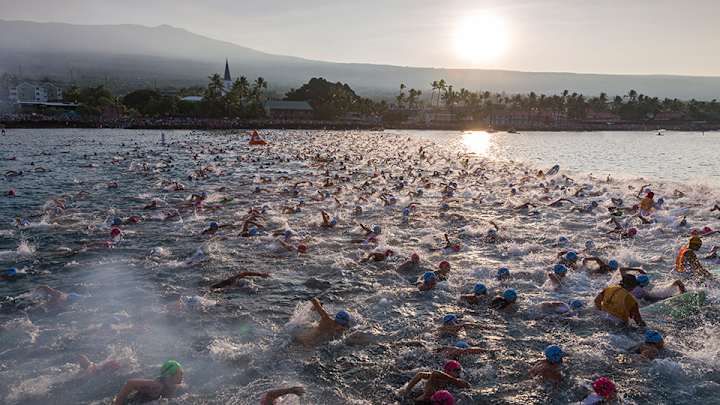
On Oct. 10, over 2,300 athletes representing 62 countries and territories on six continents will descend upon the notorious Kailua-Kona, Hawaii community in an attempt to secure the ultimate title of, "Ironman." The physical suffering and mental anguish they’ll endure will also teach them more about their own, unknown limitations. Welcome to the 37th Ironman World Championship and its 140.6 miles of, well, hell.
The world championship’s 2.4-mile swim, 112-mile bike ride and 26.2-mile marathon makes this race arguably the world’s most physically demanding single-day sporting event, leaving the planet’s elite with 17 hours to complete the three segments—that’s if they can get through the ever-changing currents of Kailua Bay, well-known 45 mph head- and cross-winds, and sizzling, humidity-laden temperatures.
Three-time world champion, Australia’s Mirinda Carfrae, who overcame a 14-minute, 30-second deficit at the start of last year’s marathon, knows what’s required to be the Big Island’s best.
“I never go to Kona thinking, ‘I can win, I’ve got this,’” Carfrae tells SI.com. “I think it would be a huge error to have that mindset. I know I’ll be ready and be in the best shape I can possibly be when I stand on the start line.”
Carfrae crushed last year’s time gap, taking the women’s lead with less than 4 miles remaining and posted a new women’s run-record. Ironically, the record she broke was her own.
“When I heard the 14:30 split heading out of [Transition 2], I tried not to let it affect me too much,” Carfrae explains. “Honestly, I didn’t think the win was possible at that point. I just had to focus on what I know, which is how to run a fast marathon. Even after I moved into the lead, it didn’t really sink in until I was at the top of Palani [Road] that I was going to win again. I wanted to soak it all in and celebrate … this time, I just wanted to enjoy the moment.”
Behind the Body: How to train like Ironman champion Sebastian Kienle
Germany’s Sebastian Kienle, who last year won his first world championship after beginning the marathon on a six-minute-mile pace and advancing nine minutes on his competitors by the seven-mile mark, will be hunting another victory in Kona. But he also knows the competition is fierce and unforgiving.
“I was very happy to have a taste of victory last year—I want more,” Kienle says. “I think it will be very difficult to defend the title—the battle with Jan Frodeno is very motivating. But at the end, it’s just what I love. I live the life I live, and I’m very happy that I have the talent to do it at the very top.”
Competing in the mix of the world’s elite will be American actor Sean Astin—most commonly known for his roles in the hit films Rudy and Lord of the Rings—who will be racing for his charity, Run3rd. The organization, which has been growing since 2012, supports elementary after-school running programs in low-income areas.
“I feel a really powerful sense of mission and purpose with all of [the] running I do,” Astin tells SI.com. “When I was a kid, my parents infused in me this idea that my life was important—that I was going to have a big life. Having this piece of my life is all about being committed to do something, demonstrating resilience and that sense of accomplishment—what it feels like to cross the finish line. This is part of my life story, and I want my life to mean something big.”
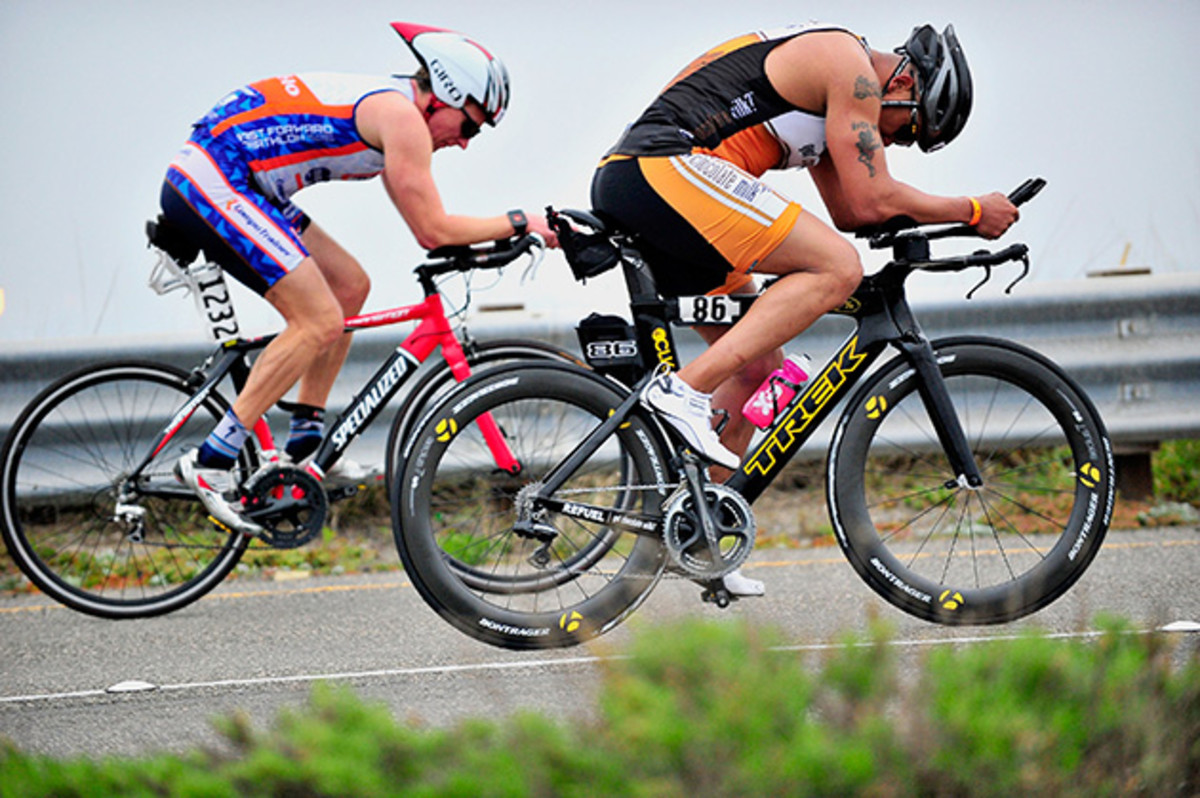
Also making an appearance on the Big Island this year is celebrity chef Gordon Ramsay, Paralympic handcycling champion and CART racing legend Alex Zanardi, and 85-year-old American, Lew Hollander—the oldest competitor to step onto the world championship’s starting line.
“In 2011, I finished in 14:04:48 after poor fueling and a torn hamstring,” Ramsay explains to SI.com. “This year, with the change in my training and changing the way I fuel myself during the race—eating every half-hour, instead of when I’m hungry—I hope to set a new [personal record], but also enjoy the course. It’s so beautiful when you’re under the water at 5:15 a.m. and see an amazing array of fish—it’s extraordinary.
“Learning from my last experience, I’m doing a lot more brickwork—swimming, I love swimming. I’m doing a lot more strength work in the legs. Lots of squats … lots of weight on the shoulders, pull-up bars and TRX bands, and I’m doing more hill training.”
- MORE EDGE: Making the case for more Ironwomen in Kona
This year’s world championship field is most represented by 768 U.S. athletes, with the largest number coming from California, 138; Colorado, 54; Hawaii, 49; Texas, 44; and New York, 44. Internationally, Australia boasts 250 athletes, followed by Germany, 175; Great Britain, 148; Canada, 114; and Brazil, 98.
“I love the sport,” Carfrae says. “I always say that if I lose that passion, I’ll stop racing. I’m motivated by wanting to win again in Kona, but even more than that desire, I’m motivated by the process—it’s the whole package of training and racing, and developing as an athlete year upon year. And I love it.”
Aloha.
***
The Ironman World Championship fosters more than an extreme bodily challenge to those brave, able-bodied athletes who have opted to be taken into its whirlwind of physical destruction. For a select population, competing in the world’s most challenging single-day endurance race provides an encounter way beyond comprehensible. Just ask Steve Walker.
The 32-year-old former Marine was diagnosed in 2001 with retinitis pigmentosa, an inherited degenerative disease that demolishes the retina and optic. By 2004, Walker was legally blind.
Gordon Haller Q&A: Winning the first Ironman, race evolution and more
“My legal blindness has put me closer to the end of the spectrum of total blindness,” explains Walker, who by 2013 had lost 95% of his overall vision. “I have less than 5% of my vision remaining, which is similar to looking through a distorted straw with my left eye, and only the ability to notice the presence of light in my right eye.”
Yes, Walker may be blind, but he’s the farthest from being defined as incapable. And he’s ready to prove that a disability doesn’t halt ability.
"I don’t know how or why it happens but the fact that I can’t see doesn’t cross my mind during a race,” Walker tells SI.com. “Sure, there are practical things that I do different [from] other athletes in order to get through the race, but those things aren’t registering in my mind.”
Walker will use the assistance of his guide, Chris Foster, during the world championship, while fighting unimaginable physical challenges. While he anticipates battling vertigo during the 2.4-mile swim, Walker will be connected to Foster by a swim leash, which is less than 1 meter in length.
“Even though [Chris is] an arm's distance away, most of the swim I won't be able to find him with my eyes,” Walker explains. “I use the tension of the leash—or lack of tension—to feel that I'm swimming parallel to him. I play a game in my mind during the swim—the game is to swim and not feel anything. If I feel too much tension on the leash, it means I'm pulling too much to the left, and if I bump into Chris, I've gone too far to the right. I try and hold the sweet spot in the middle. … Bumping into buoys and other swimmers isn't so much a hazard but a fun part of the swim that everyone goes through.”
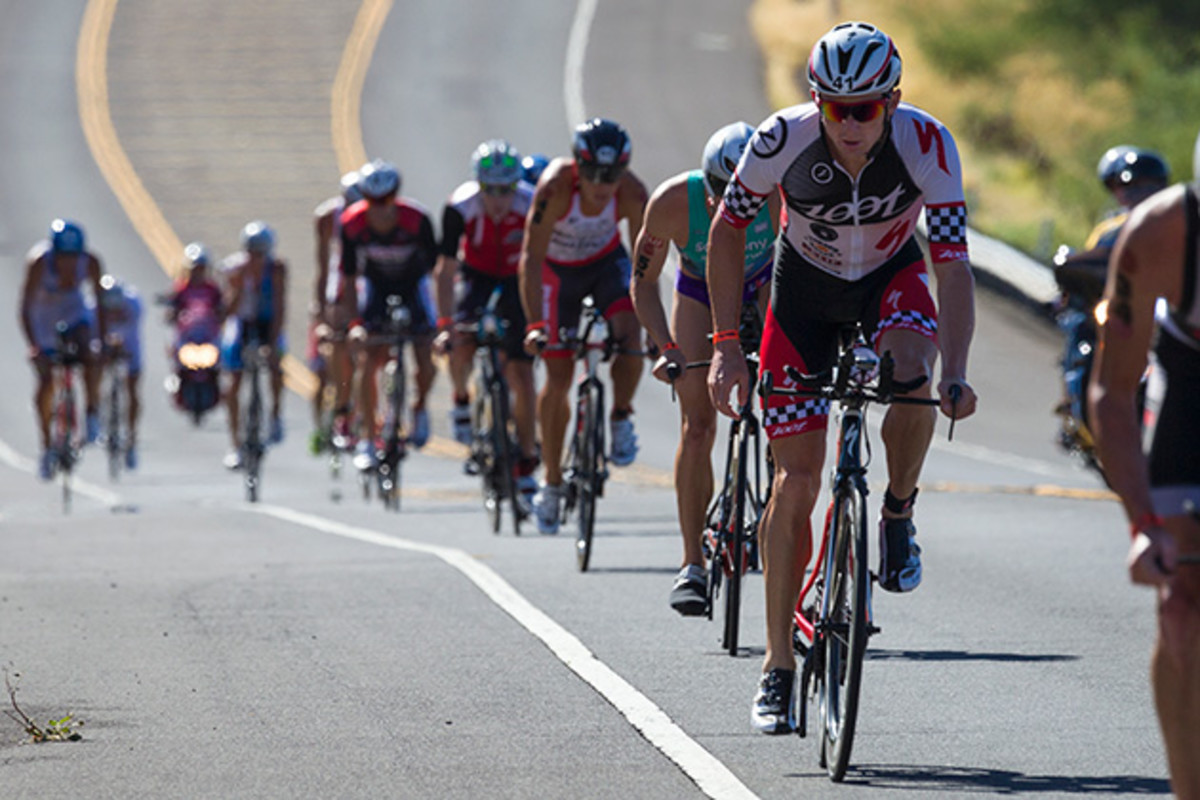
During the bike segment, Walker will ride tandem style, where his main objective will be to focus on power, overall balance and smoothness.
“My guide is in the front handling all the braking and gears,” Walker says of the 112-mile bike race. “[This] leg will be my favorite part of the race, but I cannot get into the aero position—I only have bullhorn-type bars in the back. I will try and sit as low as possible, but my head actually rides over the lower back of Chris. … [We] have been riding long enough where most of our communication is nonverbal. My vision doesn’t slow us down, at all.”
The 26.2-mile run provides a host of new challenges, as road conditions can easily change, forcing vigilance from both Walker and Foster.
“I want my guide to be as natural as possible while running,” Walker states. “Watching for and calling out every crack or dip in the road gets taxing on both of us. … Most of the time, I can grab my own nutrition in the aid stations, but with the nature of race conditions, my guide usually helps me when needed.”
So, the question remains: Why? … Why would a former Marine whose due diligence was already satisfied by serving the U.S. Armed Forces—disabled three out of his four-year commitment—opt to compete on a world-class level? For Walker, it’s clearly a no-brainer.
“The single biggest reason I fell in love with Ironman and the sport is because I truly forget about my vision loss while I train, and especially while I race,” Walker says. “As a visually-impaired athlete, we have to make peace with the circumstances and not dwell—or concentrate—on what we can't control.”
Cheers to that.
2015 IWC historical facts and stats
- 72% of participants—1,717 athletes—are male, while 28% of participants—664 athletes—are female, marking the largest female field in history at the Ironman World Championship.
- With 664 female participants, there is a more than 6% increase in female participants from last year.
- This will be the largest athlete field ever at the Ironman World Championship.
- 99 race participants—57 males, 42 females—or 4% of the total field, are professional athletes.
- Mirinda Carfrae is vying to claim her third consecutive Ironman World Championship victory, a feat last accomplished by Chrissy Wellington of Great Britain in 2009.
- After losing the men’s title to Europe in 2014, Australia is out to reassert its dominance in the men’s field with six Ironman World Championship victories in the past eight years.
- A total professional prize purse of $650,000 is distributed among the top 10 professional male and female finishers.
- Temperatures on race day range from 82 to 95 degrees, with the humidity hovering around 90 percent.
- Crosswinds on portions of the bike course sometimes gust as high as 60 mph.
- More than half the swim course is approximately 20 feet deep. Some depths reach up to 90 feet. Average water temperature is 79 degrees.
- More than 5,000 volunteers will help make Kona a success—650,000 items must be set up, put together, washed, cleaned, picked up or disposed of.
- More than 204,000 registered athletes representing nearly 200 countries and territories competed in Ironman and Ironman 70.3 races this year.
- 25 new Ironman and Ironman 70.3 races were established in 2015.
GALLERY: Highlights from the 2014 Ironman championship
The 2014 Ironman World Championship in Kona
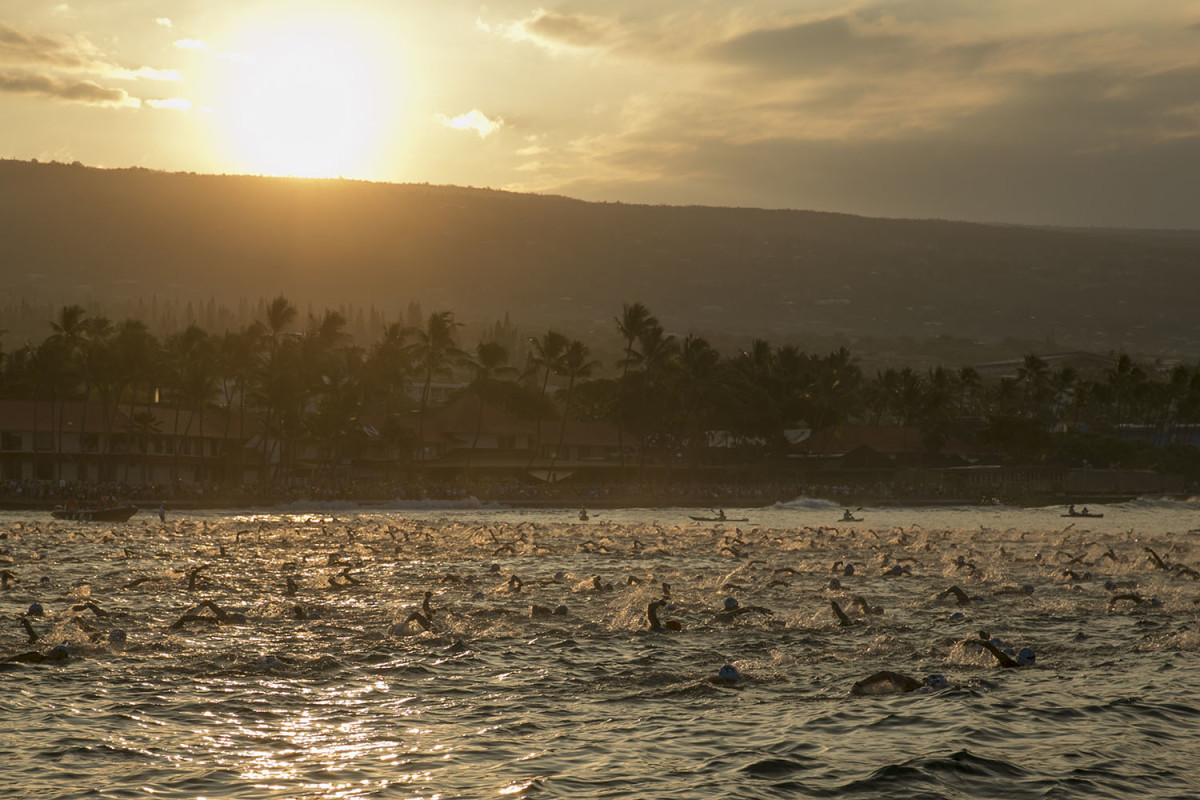
The sun rises over Mauna at the start of the IRONMAN World Championship.
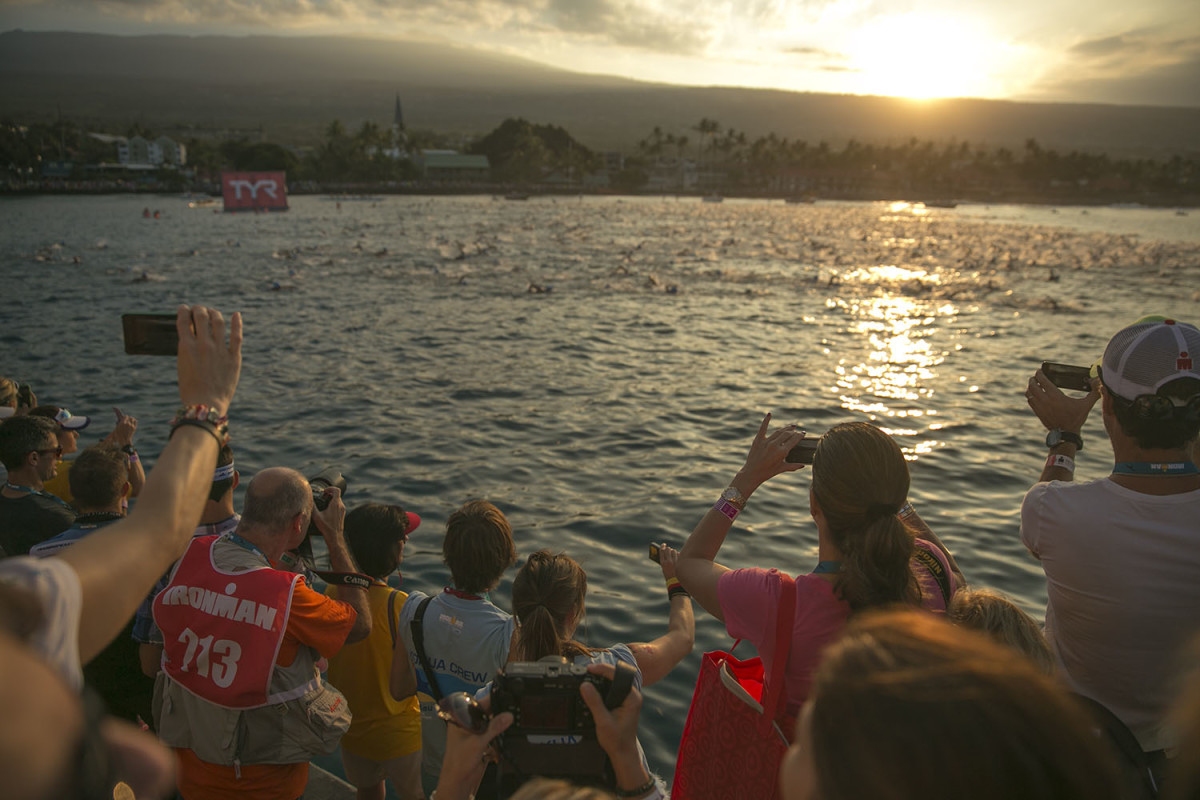
Onlookers watch the swimmers at the start of the race.
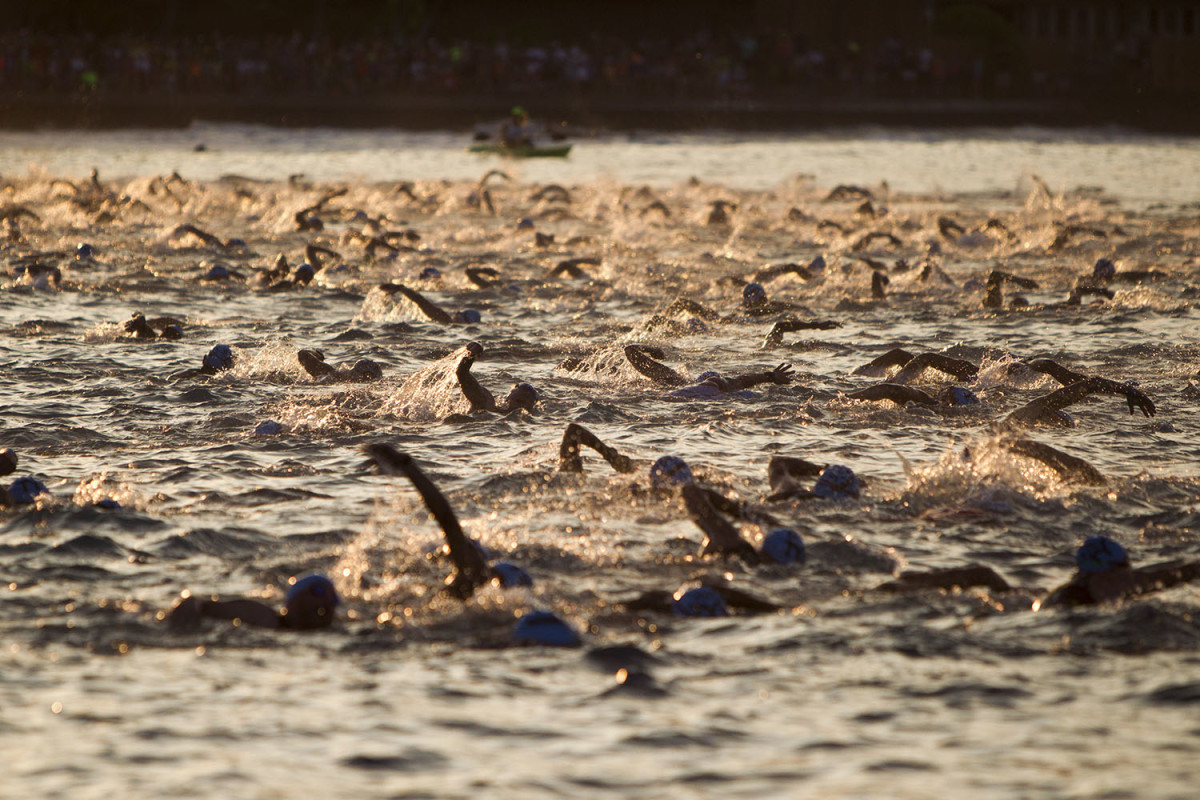
Swimmers are seen at dawn in the 2014 IRONMAN World Championship on Saturday, Oct. 11, 2014 in Kailua Kona, Hawaii.
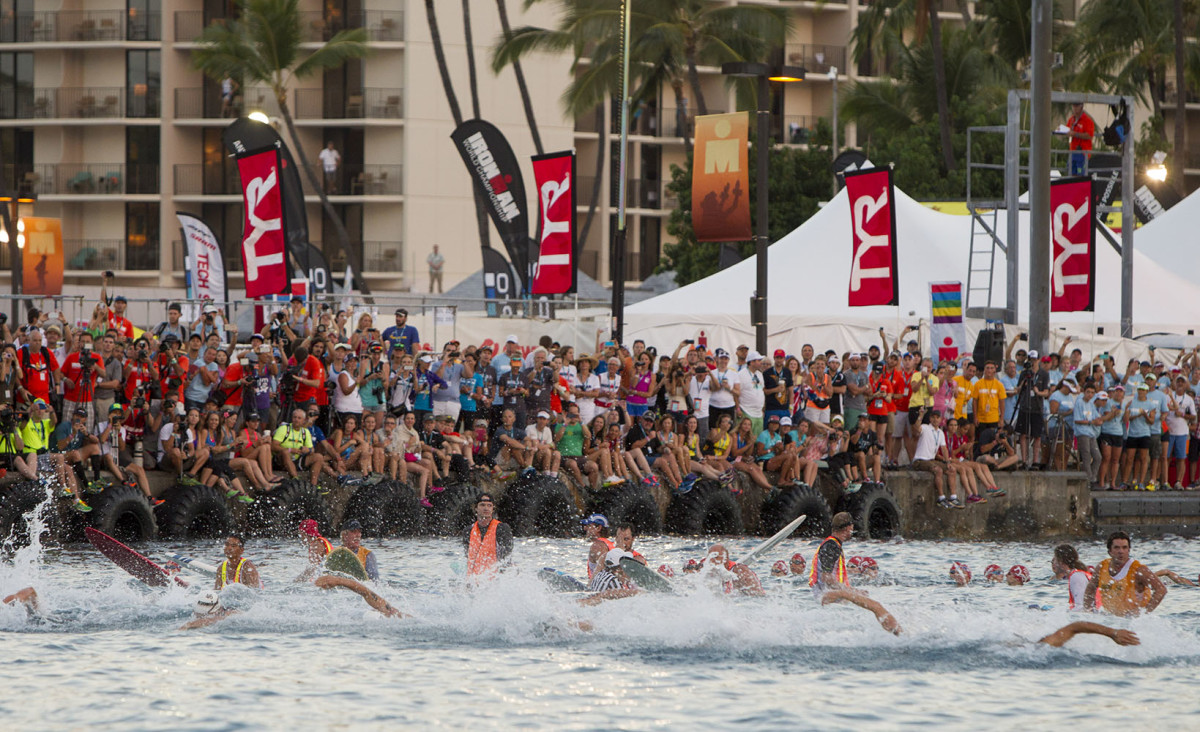
Swimmers are seen at the start of the 2014 IRONMAN World Championship.
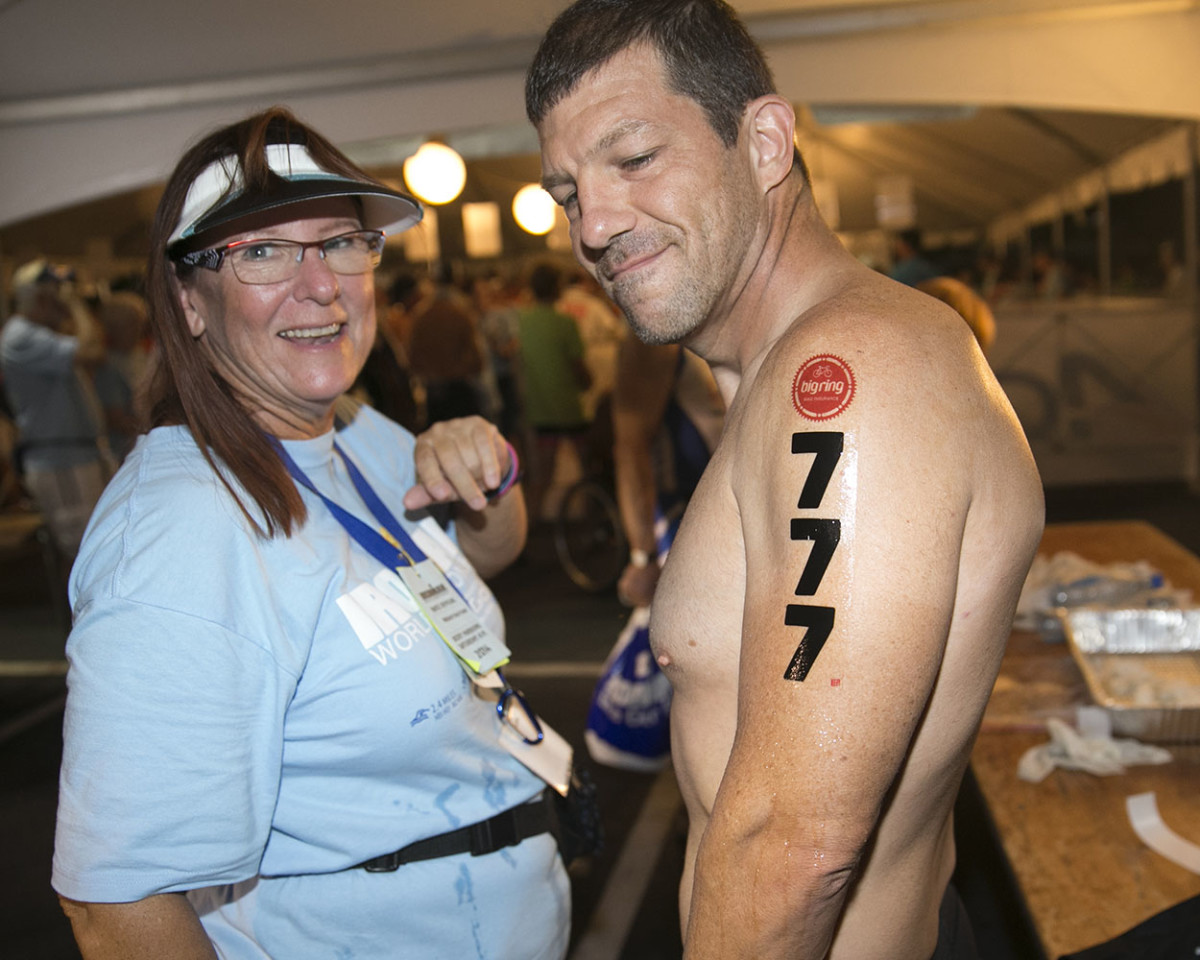
A race official places a body number on athlete Mike Avadikian before the start of the 2014 IRONMAN World Championship.
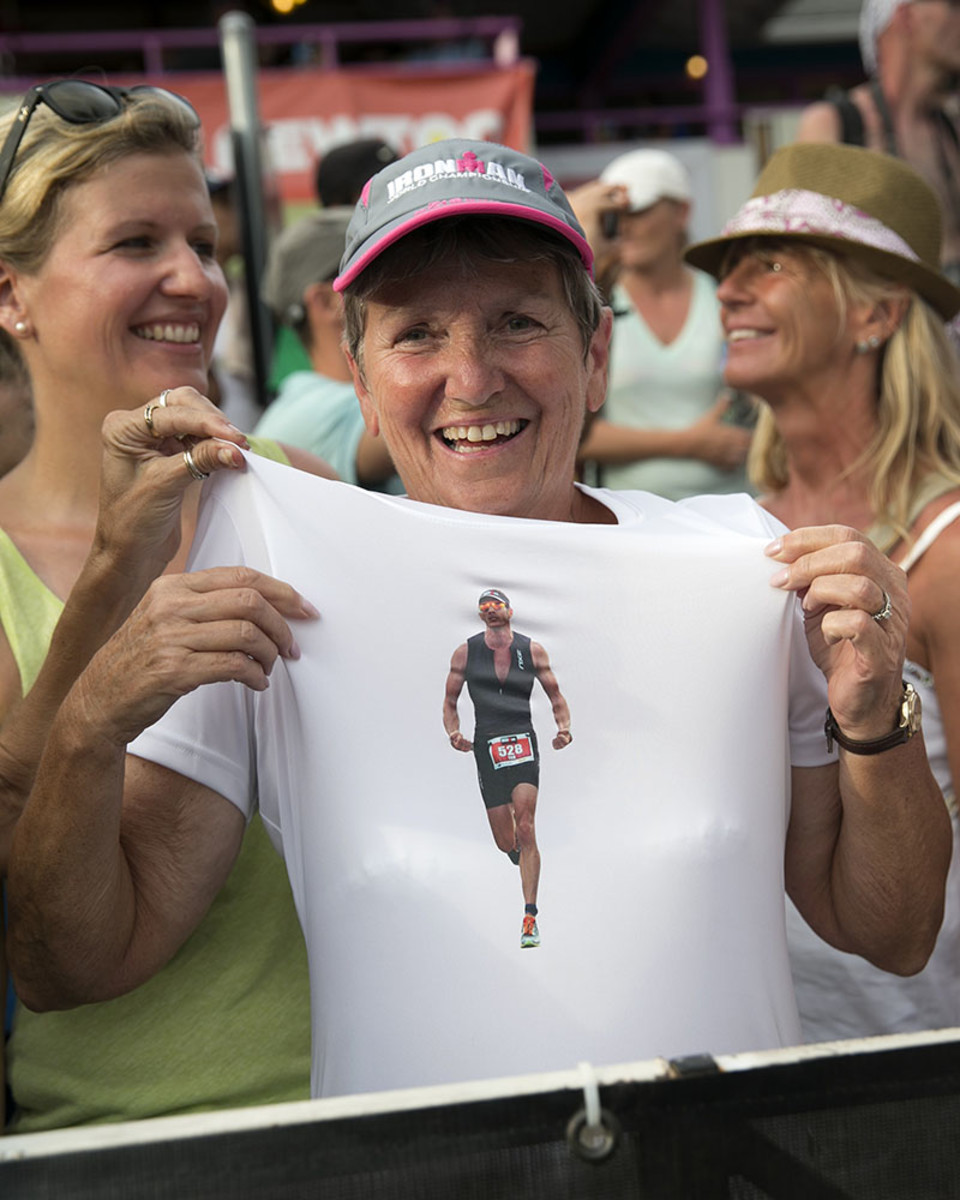
A fan wears a shirt of athlete David Arnold.
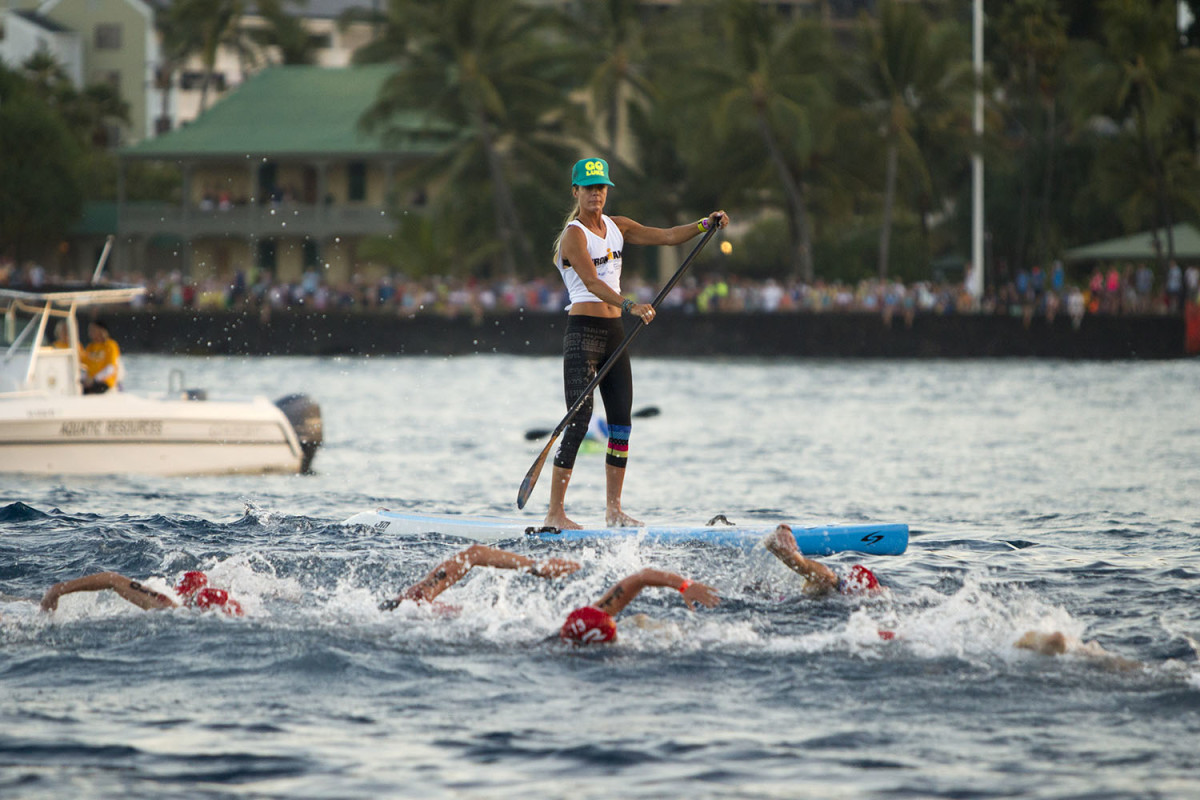
A paddle boarder watches over swimmers during the start of the 2014 IRONMAN World Championship.
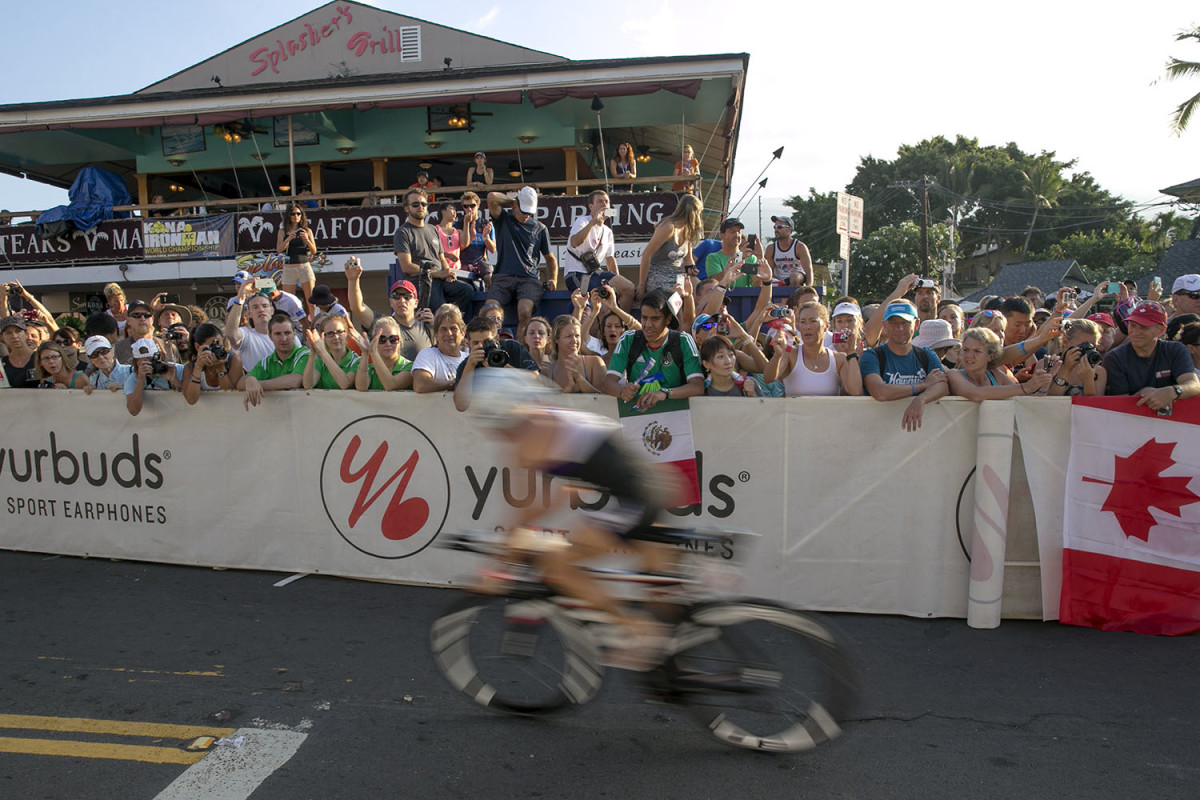
Onlookers watch bicyclist at the start of the 112-mile bike race of the 2014 IRONMAN World Championship.
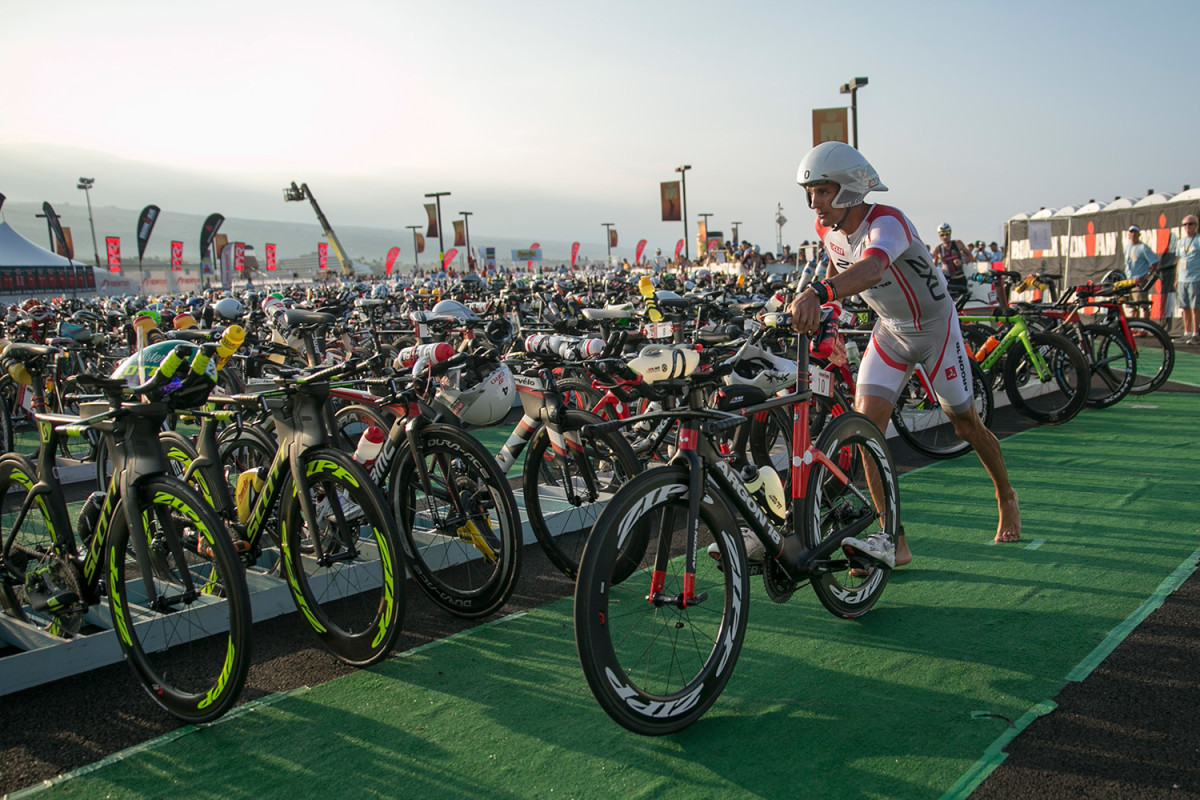
Terenzo Bozzone takes his bike out of the transition area before the start of the 112-mile bike race.
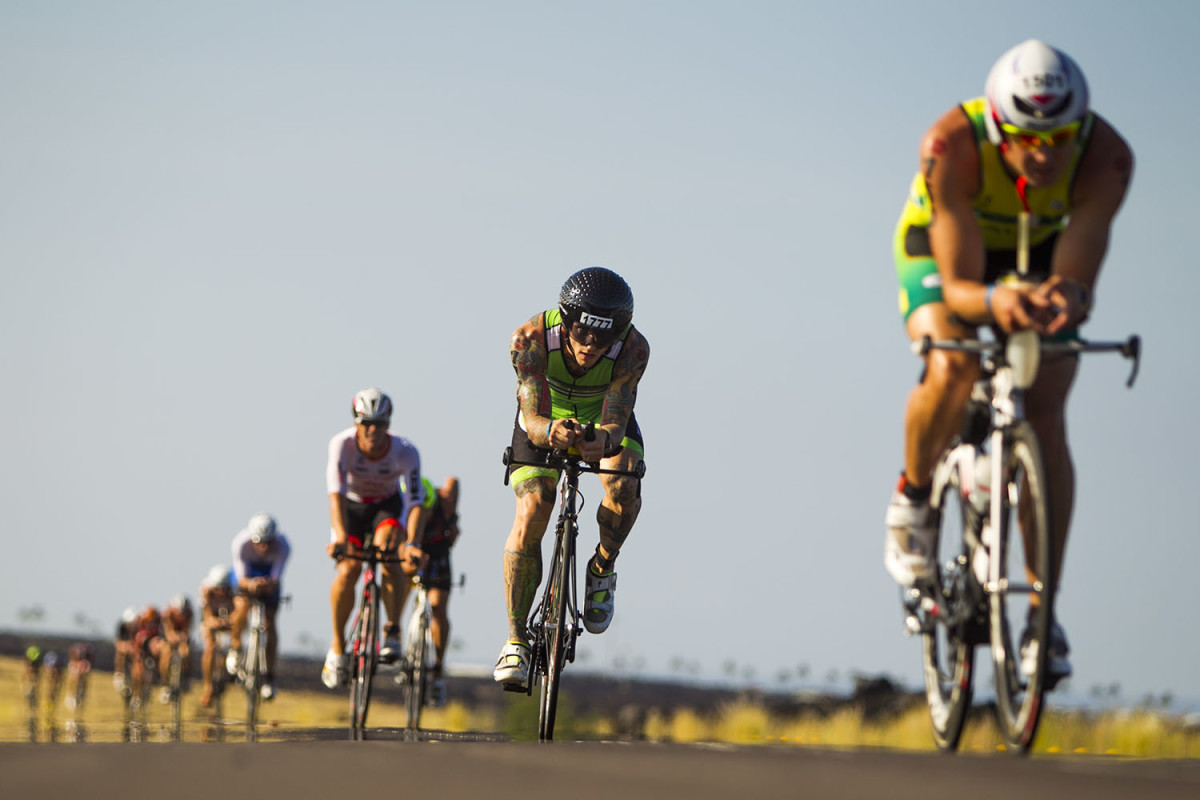
Age group racers hit the road during the 112-mile bike race.
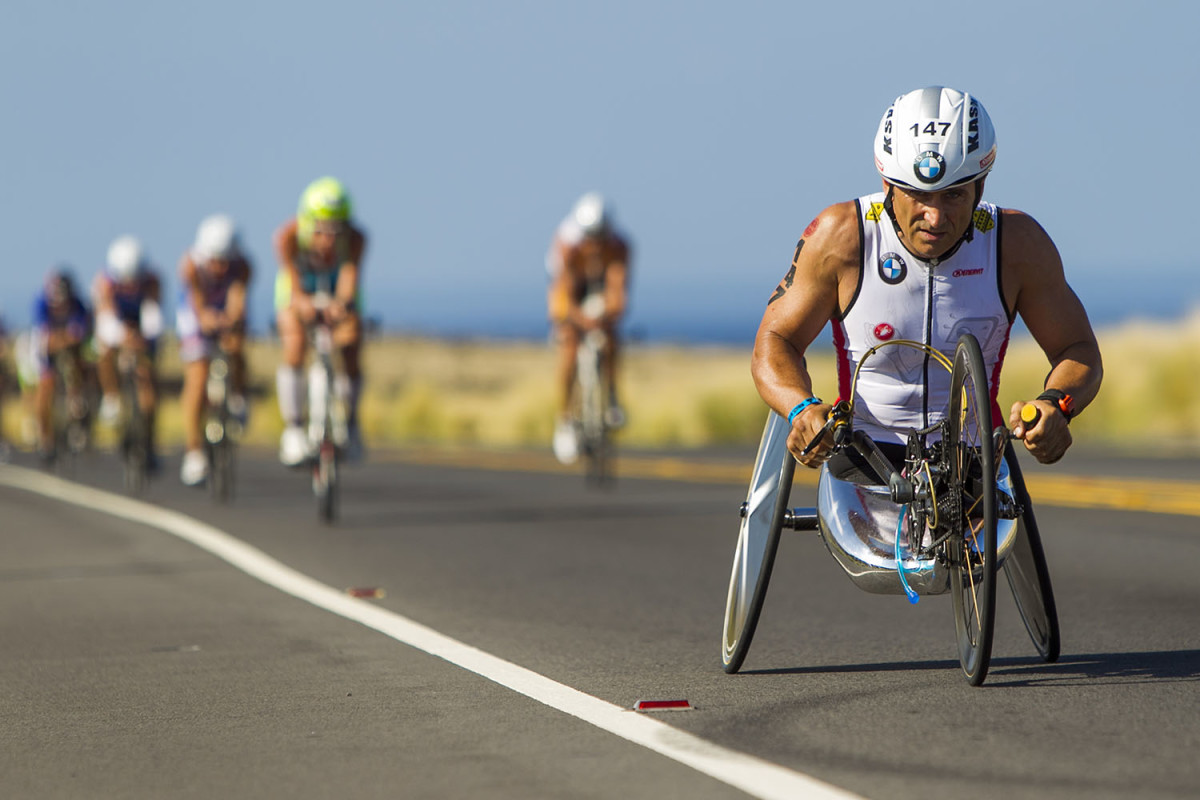
Paralympic handcycle champion Alex Zanardi leads a pack of racers during the 112-mile bike portion at the 2014 IRONMAN World Championship.
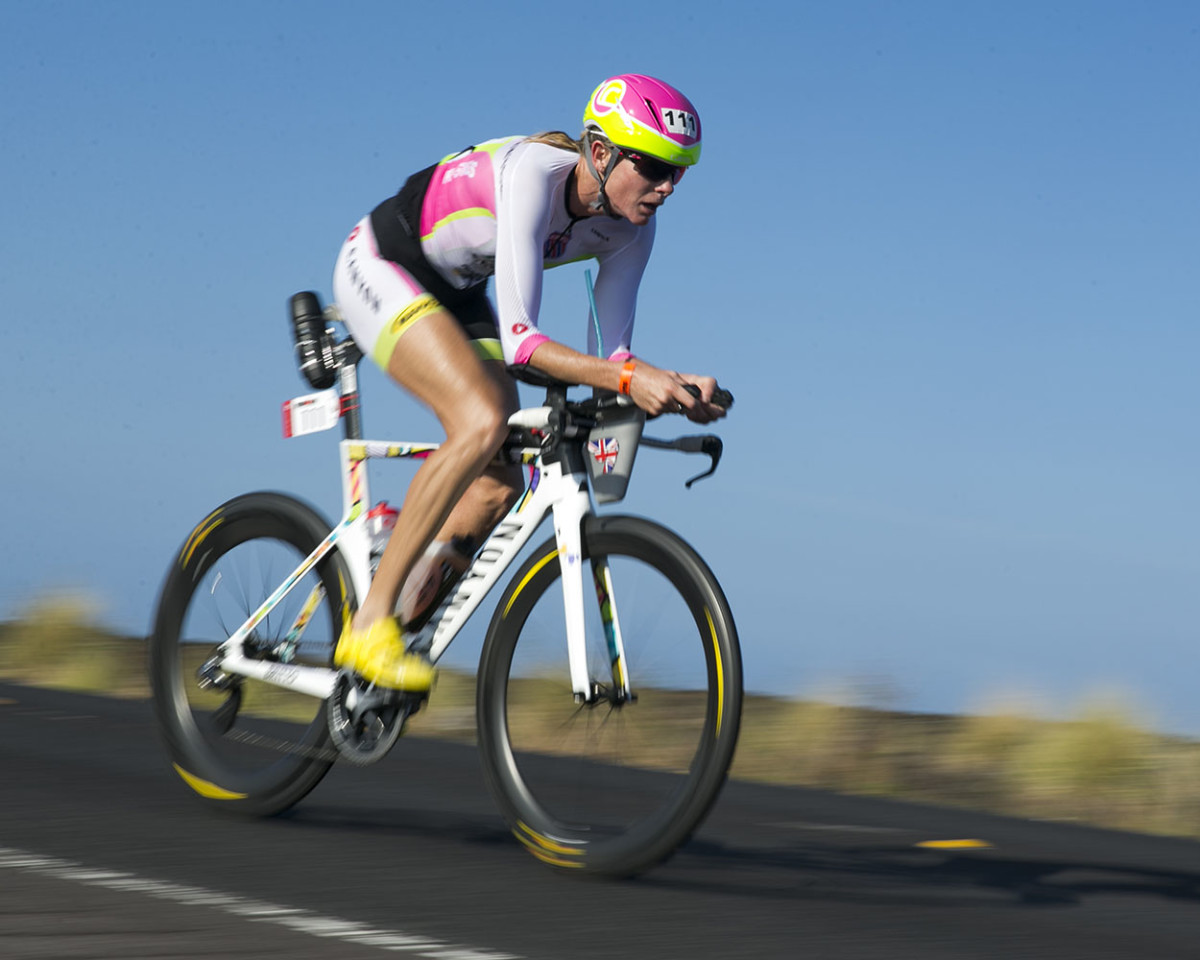
Leanda Cave zooms down the road during the 112-mile bike race.
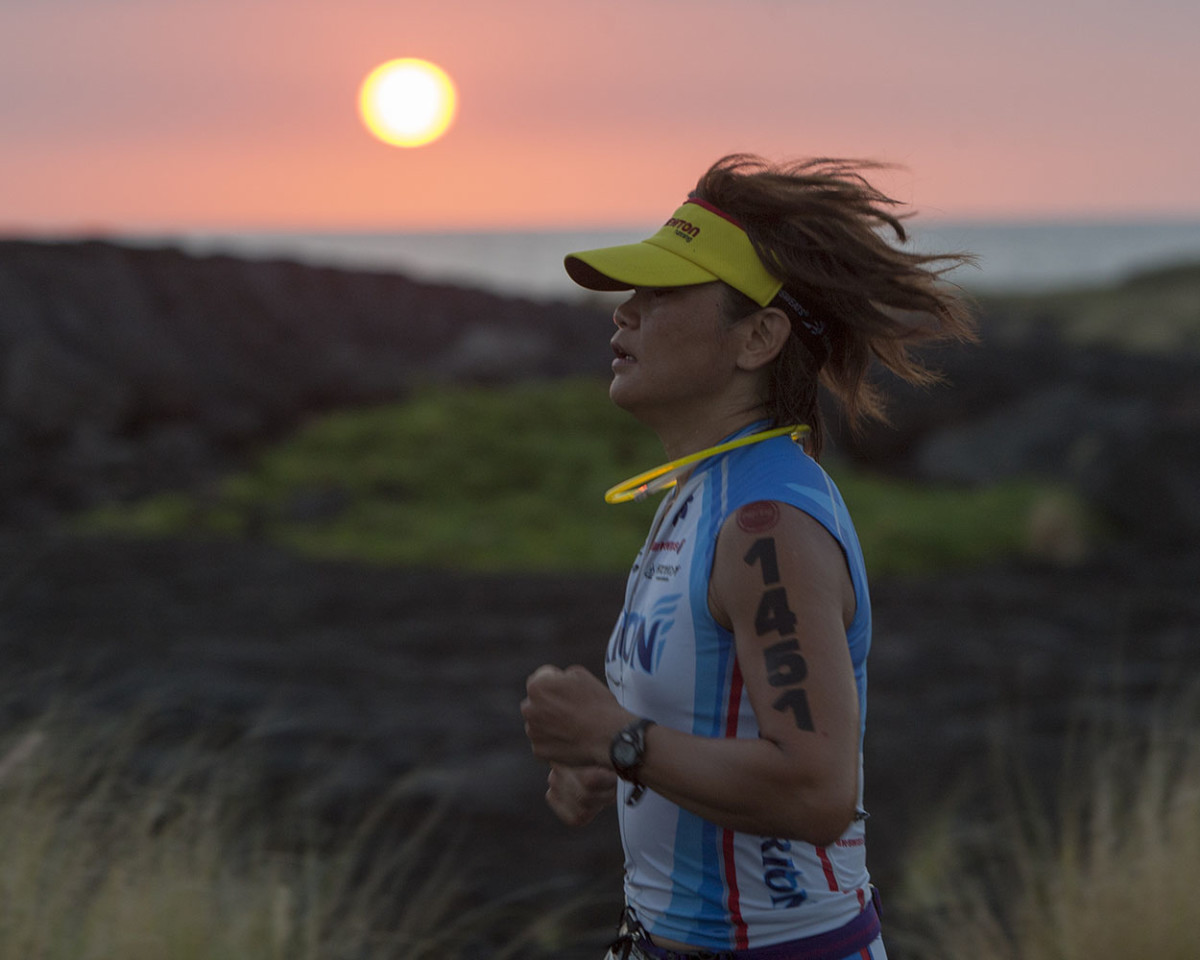
As the sun sets, Kaoru Suzuki runs the marathon during the 2014 IRONMAN World Championship.
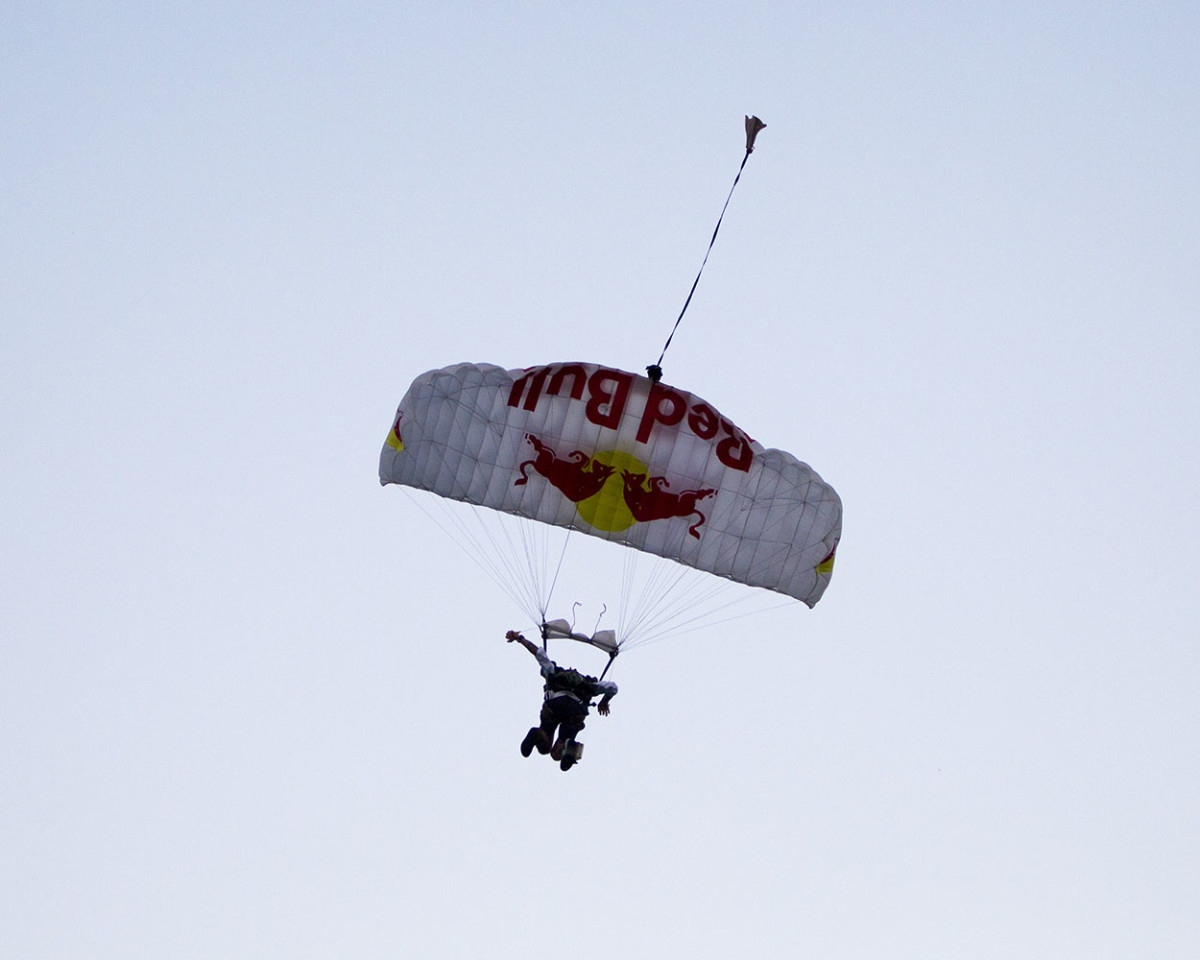
A Red Bull parachute team member jumps into the ocean before the start of the 2014 IRONMAN World Championship.
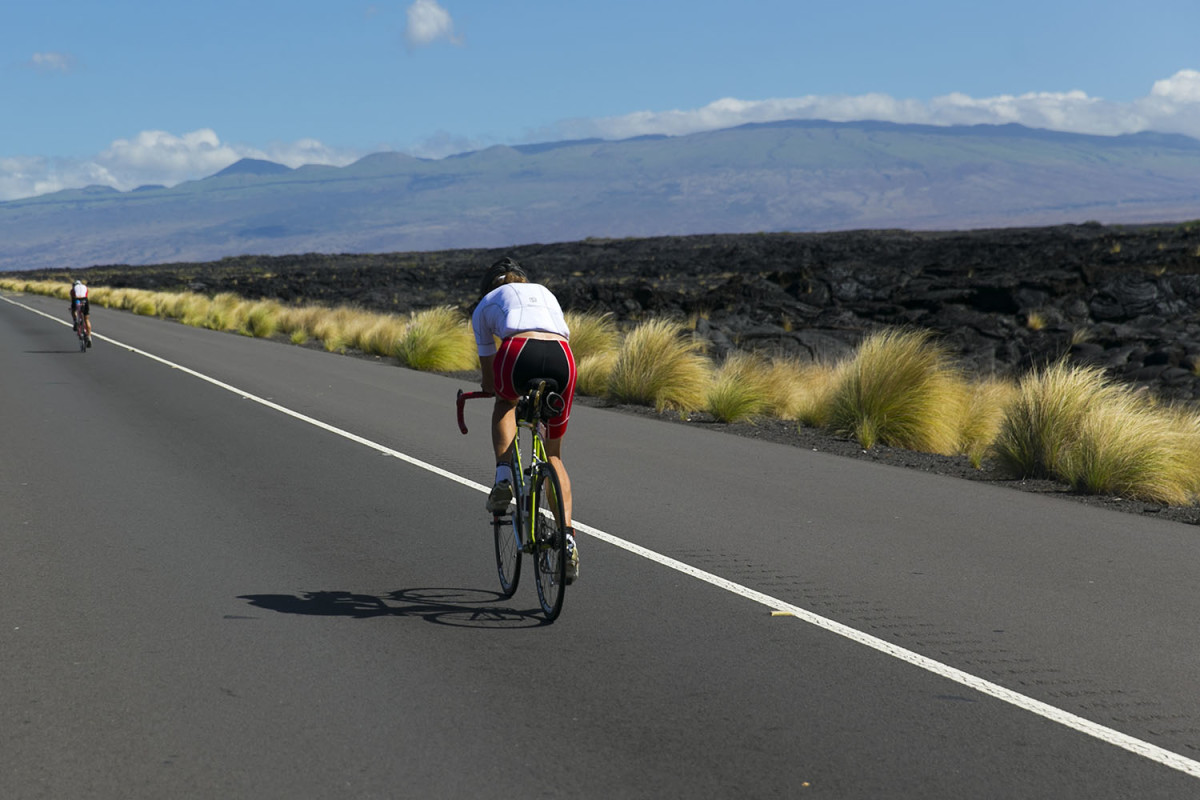
Athletes zoom down the road during the 112-mile bike race.
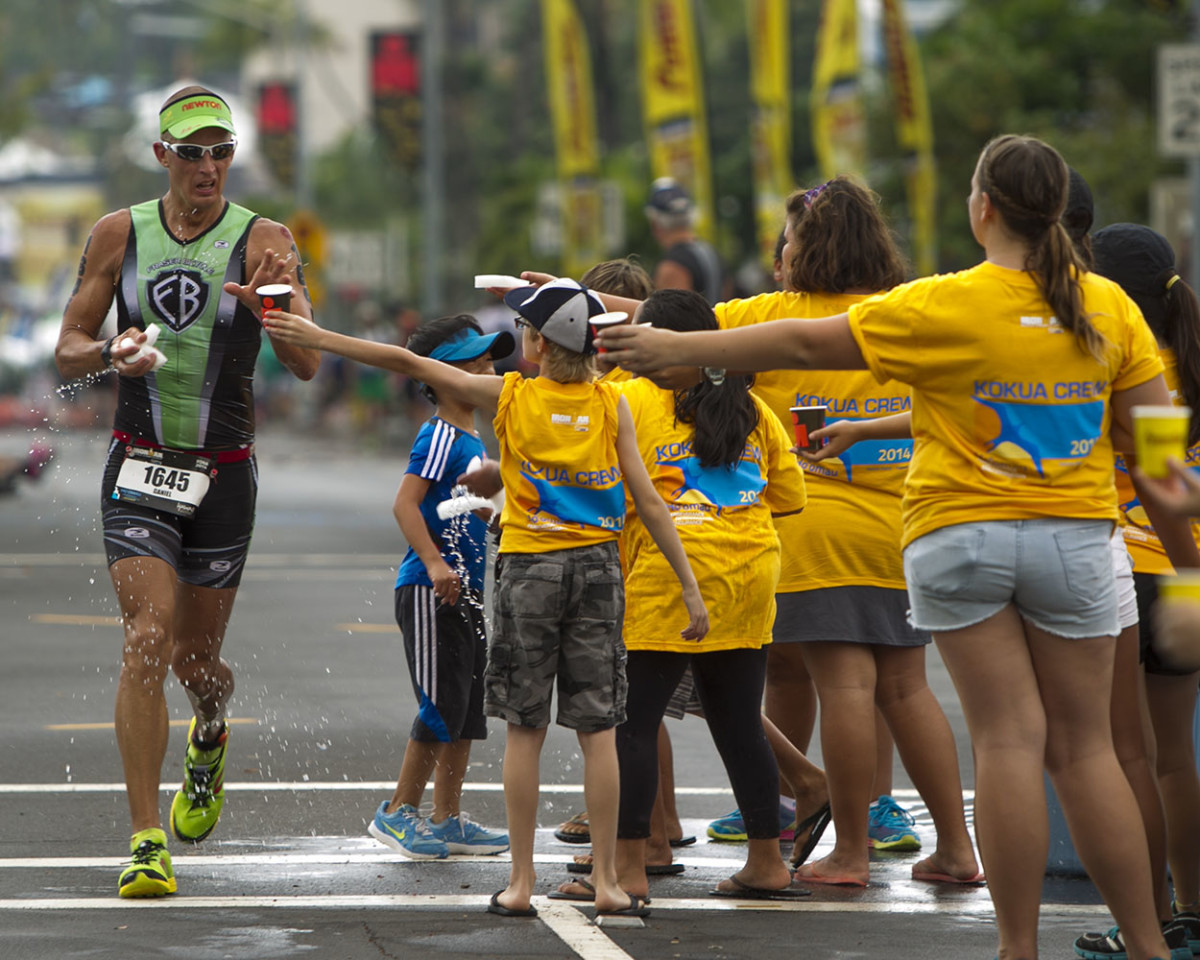
Daniel Stubleski grabs water from an aid station during the marathon portion of the 2014 IRONMAN World Championship.
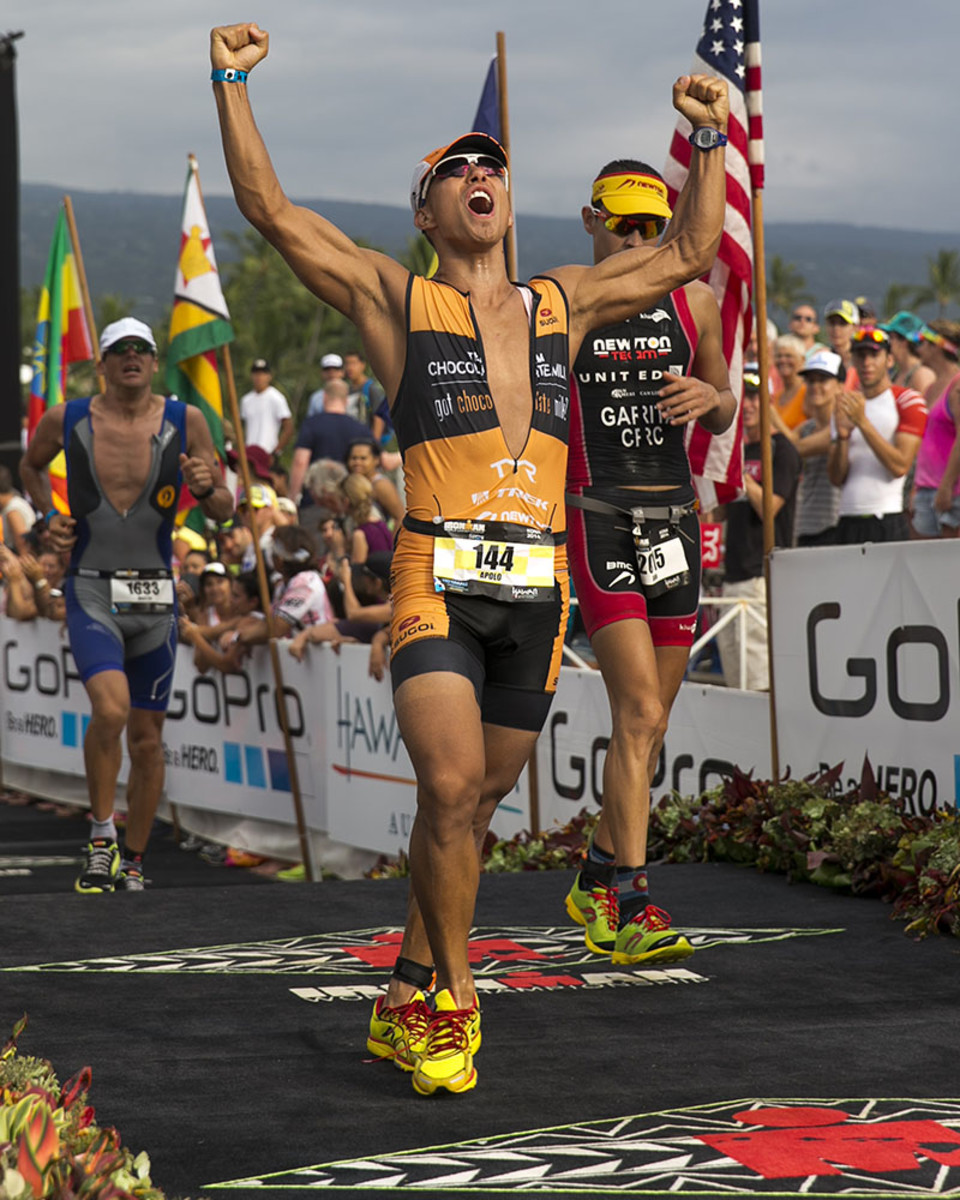
Former Olympian Apollo Ohno crosses the finish line at the 2014 IRONMAN World Championship.
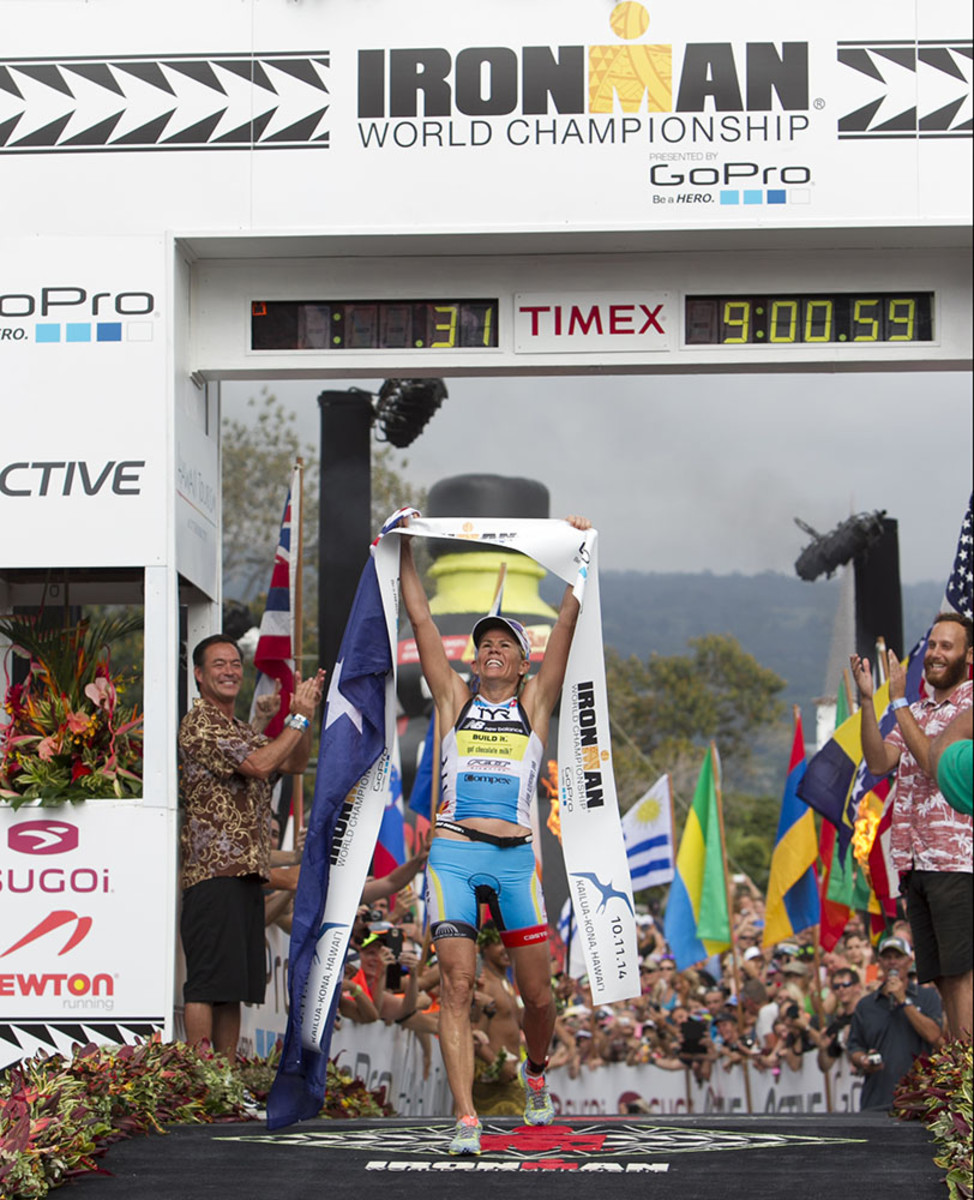
Mirinda Carfrae wins the woman's 2014 IRONMAN World Championship title.
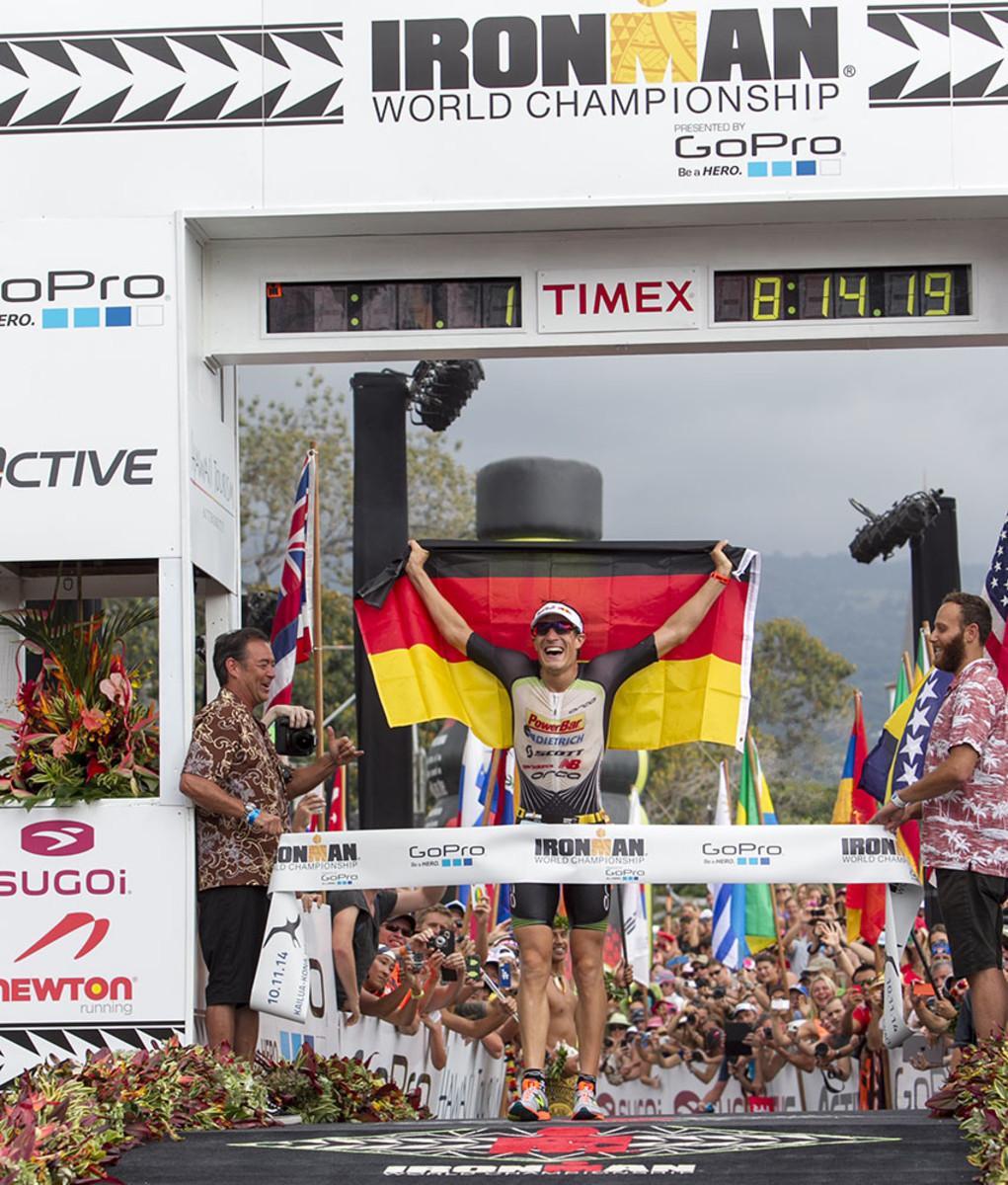
Sebastian Kienle wins the men's 2014 IRONMAN World Championship title.
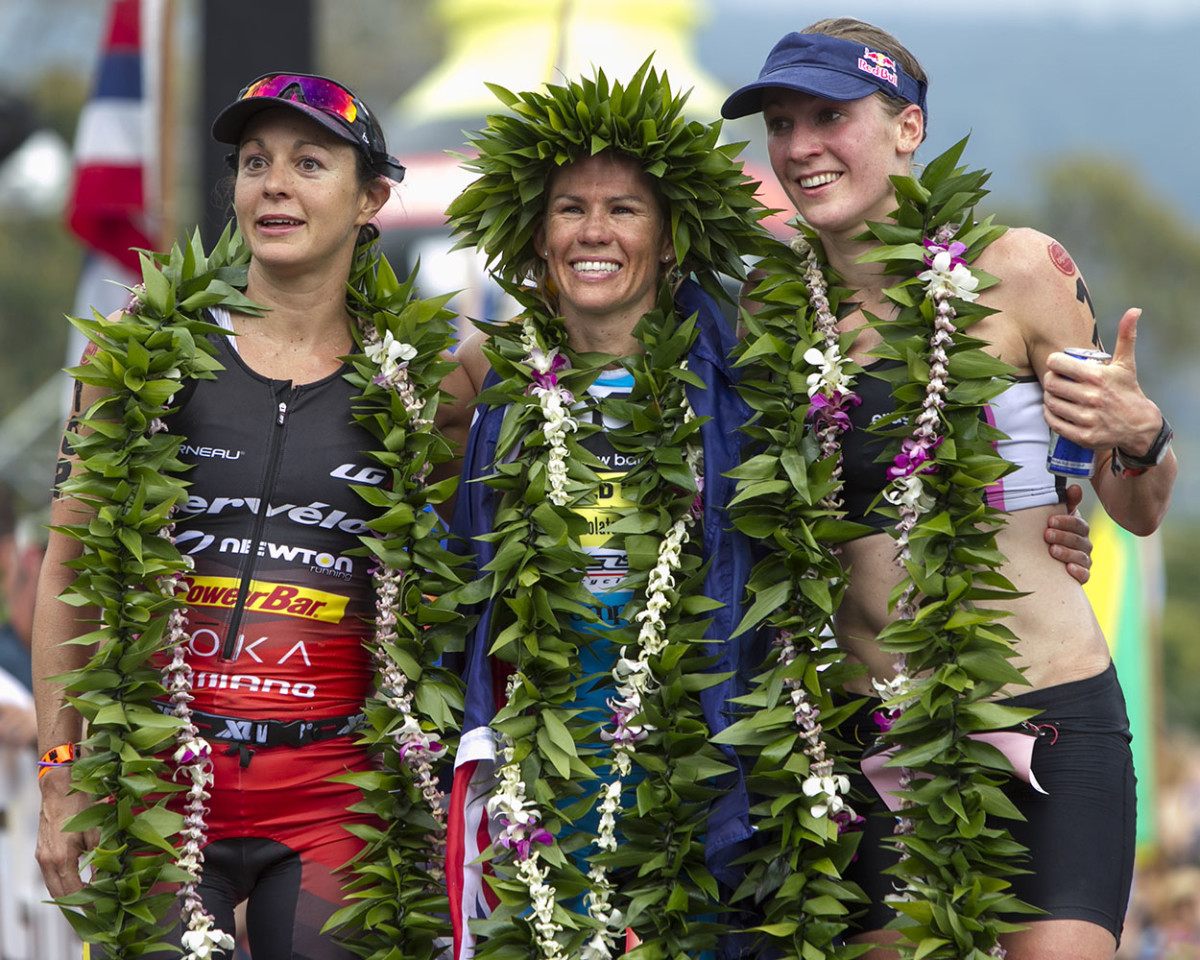
(Left to right) Rachel Joyce, Mirinda Carfrae and Daniela Ryf are seen at the finish line during the 2014 IRONMAN World Championship.
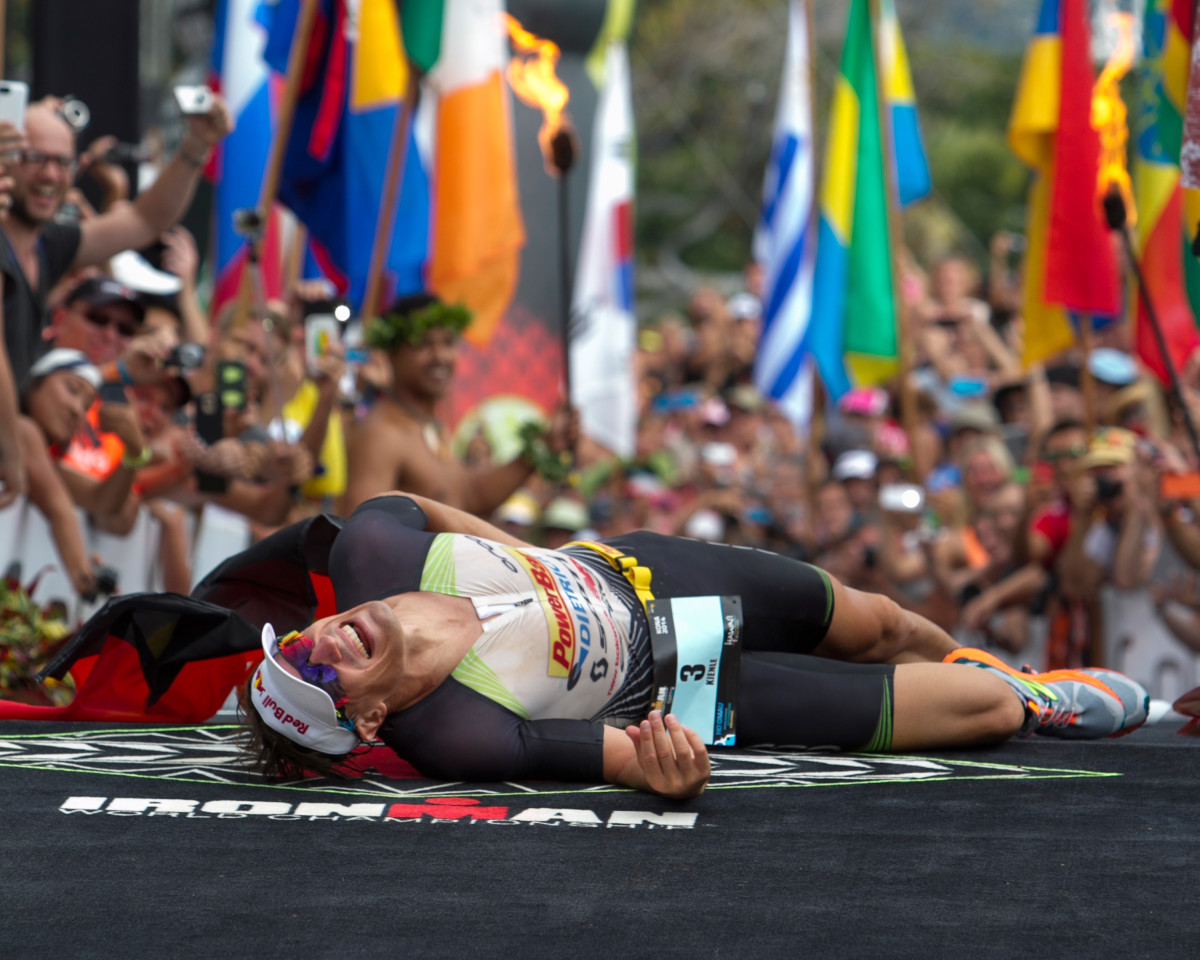
Sebastian Kienle reacts after winning the men's 2014 IRONMAN World Championship.
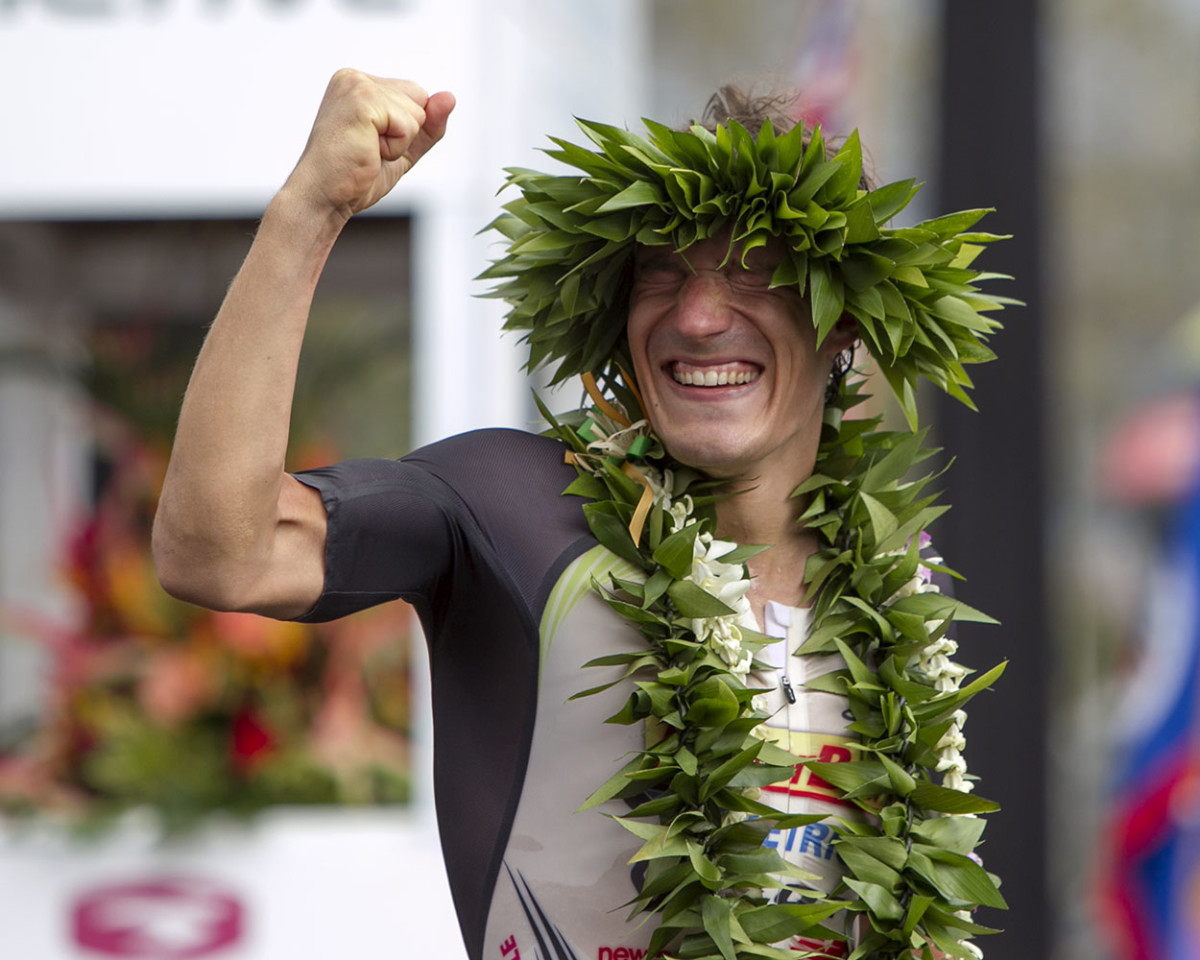
Sebastian Kienle reacts after winning the men's 2014 IRONMAN World Championship.
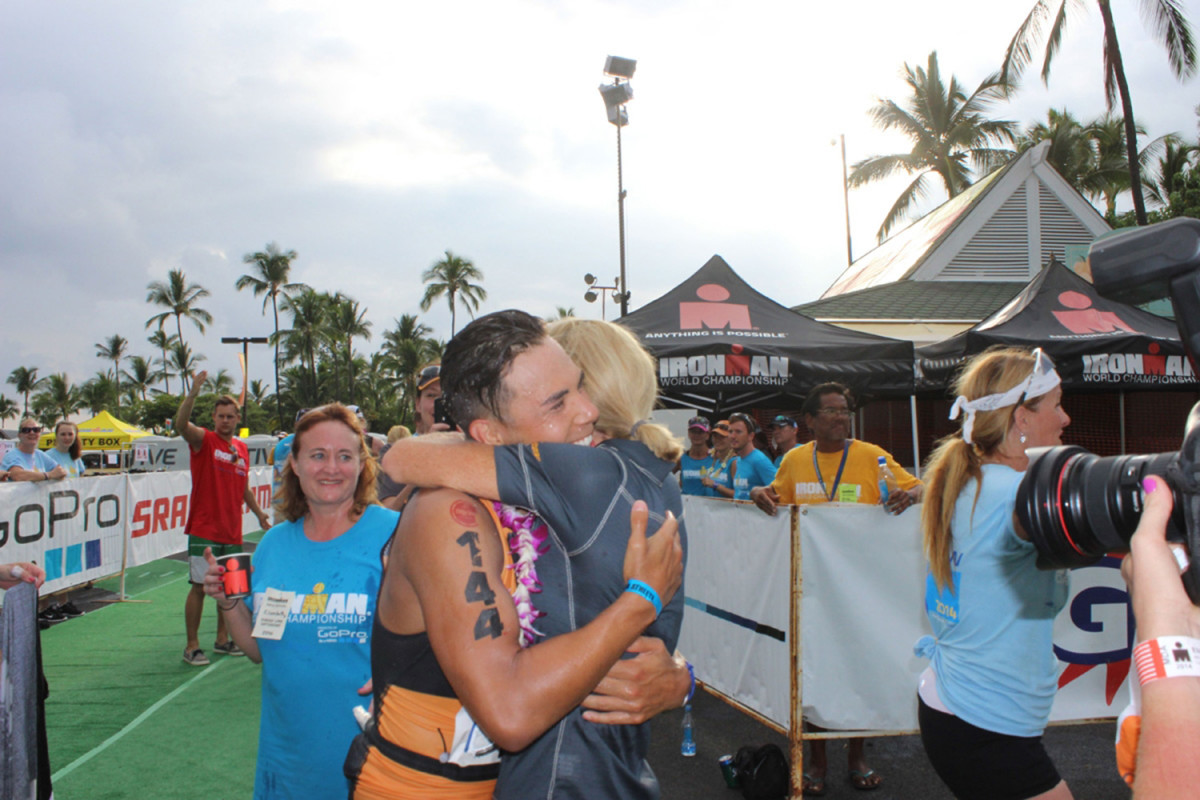
Apolo Ohno hugs coach Paula Newby Fraser after finishing the Ironman World Championship triathlon Saturday, Oct. 11 in Kailua-Kona, Hawaii.
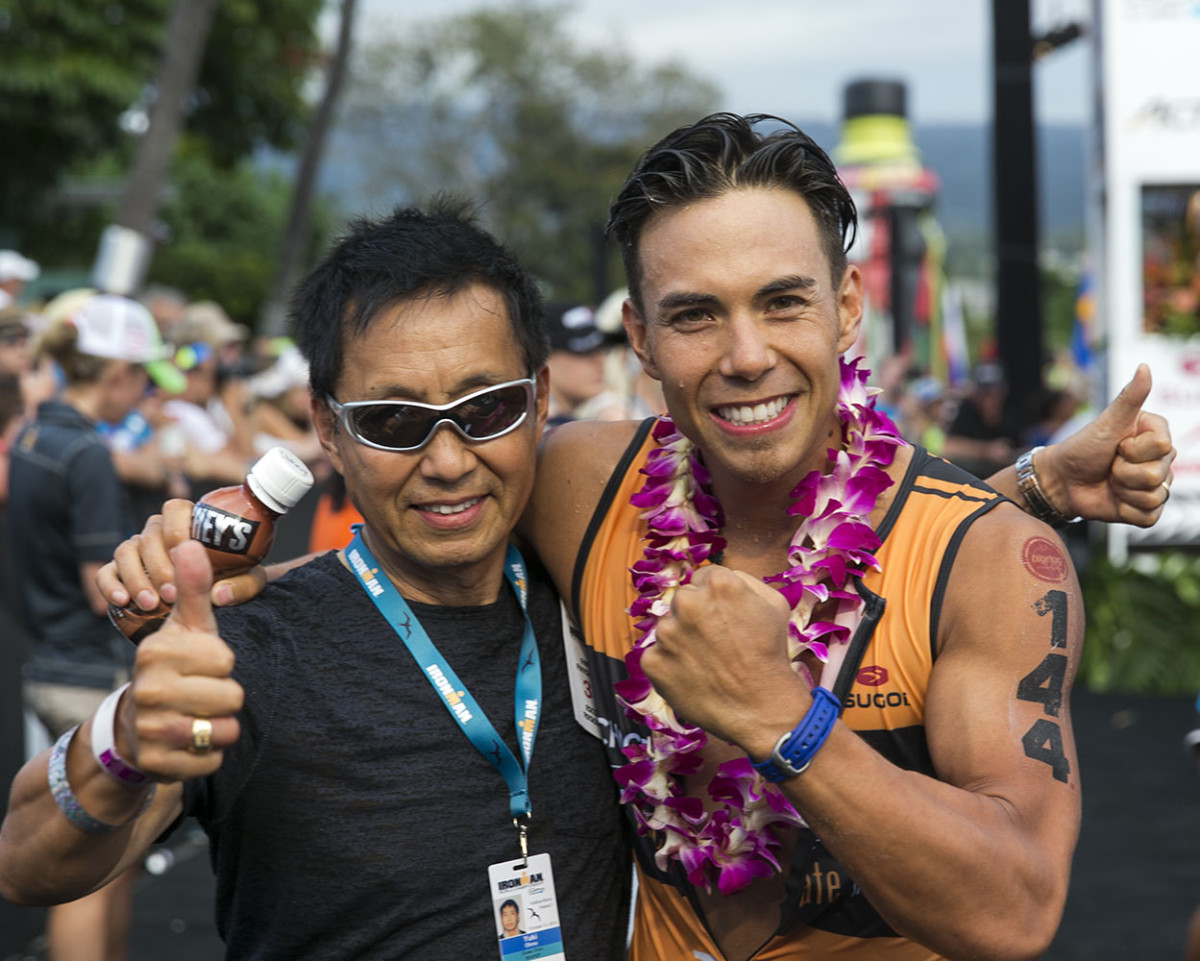
Former Olympian Apollo Ohno, right, poses with his father, Yuki Ohno after Apollo finished the 2014 IRONMAN World Championship.
